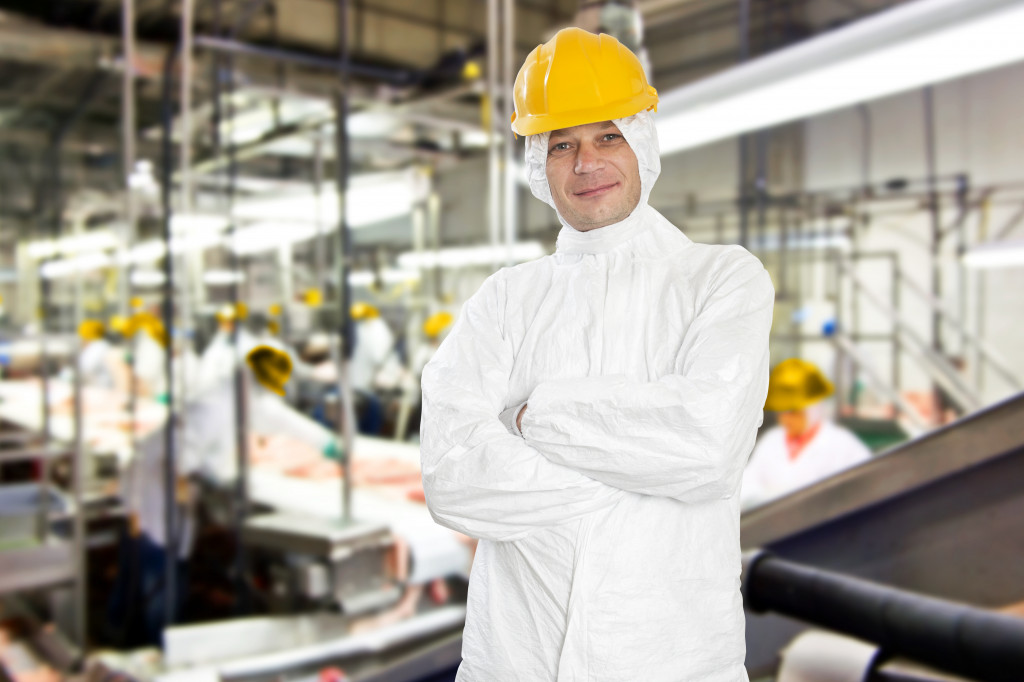- Automated meat processing lines can optimize production levels while maintaining the safety and quality of meat products.
- Intelligent sensors help to improve productivity and precision in meat processing facilities.
- Artificial Intelligence (AI) can be used to analyze data from the production process, detect patterns, and make predictions for optimizing production levels.
- 3D printing technology creates customized meat products, reducing wastage and production costs.
- Robotics technology improves safety and hygiene in the industry, increases productivity, is cost-effective, and is environmentally friendly.
Meat processing plants have always been an integral part of the food industry. With the growing demand for meat products, finding ways to improve production efficiency and quality is essential. With the help of cutting-edge technologies, improving the production operation in meat processing facilities has become much more manageable.
The latest innovations can help you optimize your production levels while maintaining the safety and quality of meat products. This blog will explore the latest trends and technological advancements that can help you increase production levels in meat processing plants.
Automated Meat Processing Lines

Automated meat processing lines have become the norm in modern meat processing plants. Mechanical systems such as conveyor belts, intelligent weighing machines, and trimming machines have helped to increase the speed of the production process while maintaining the quality of meat products. Automated lines are not only efficient, but they also help to reduce labor costs and increase profit margins.
Smart Sensors
Smart sensors have become a valuable tool for meat processing plants, ensuring products are manufactured to the highest standards with minimal efficiency losses. The integration of intelligent sensors has led to significant improvements in productivity and precision in meat processing facilities.
For instance, a remote vibration sensor can be implemented to monitor and maintain equipment efficiently, maximizing up time while minimizing unnecessary maintenance. As a result, meat processing plants can reduce downtime, optimize production, and improve safety by utilizing intelligent sensors.
Artificial Intelligence
Artificial intelligence (AI) is another cutting-edge technology that can be used to optimize meat processing plants. AI can analyze data from the production process, detect patterns, and make predictions. This technology can help plant managers make quick and informed decisions about optimizing production levels while ensuring the quality and safety of meat products.
3D Printing
3D printing technology may seem futuristic, but it is already used in the meat industry. 3D printing can be used to create meat products that are customized to specific tastes and preferences. This technology can help to reduce the amount of waste produced during the production process, thus reducing production costs.
Robotics

In recent years, meat processing plants have gone beyond the traditional use of technology to become more innovative in their production process. Robotics has become the backbone of this transformation, providing a reliable and sustainable solution, even amidst the COVID-19 pandemic. Here’s how robotics has transformed the meat processing industry.
Improved Safety and Hygiene
One of the significant challenges that the meat processing industry faces is ensuring hygiene and sanitation in plants. With a mix of wetness, high temperatures, and raw meat, there are numerous chances of contamination, which poses health risks to workers and consumers. Robotic technology comes in handy in eliminating such risks by performing critical but high-risk processing functions.
Robotic arms, for instance, are exact and accurate, ensuring that cuts are made at the right point and depth for uniformity. This ensures that no foreign materials contaminate the meat, producing quality and hygienic products.
Increased Productivity
When industries incorporate robotics technology, there is always a significant increase in production output. In the meat processing industry, this is no different. Instead of relying on manual labor, machines can accomplish tedious and repetitive tasks, reducing errors and increasing output. With the incorporation of artificial intelligence and machine learning, these robots can learn and adapt to newer and more complex tasks, doing them more efficiently.
Cost-effectiveness and Efficiency
Robotic technology is cost-effective since it eliminates manual labor and reduces errors that would be costly in the long run. For example, replacing a single worker with a robot can eliminate the associated wage expenses, absenteeism, and worker compensations (in case of injury), ultimately saving costs in the long run.
Environmentally Friendly
The meat processing industry has been grappling with wastage and environmental degradation, which can harm the ecosystem and the future of meat production. By embracing robotic technology in its production process, meat processing plants have a more sustainable approach to production. Robots performing critical functions minimize the chances of wastage, and the production cycle is optimized for maximum yield.
Final Thoughts
The meat processing industry constantly evolves, and new technologies are emerging daily to optimize production. Using these cutting-edge technologies increases production levels and improves the safety and quality of meat products.
Implementing these technologies requires investment and training, but the benefits far outweigh the costs. If you want to stay ahead of the competition, embracing these new technologies and adopting them in your meat processing plant is necessary.

